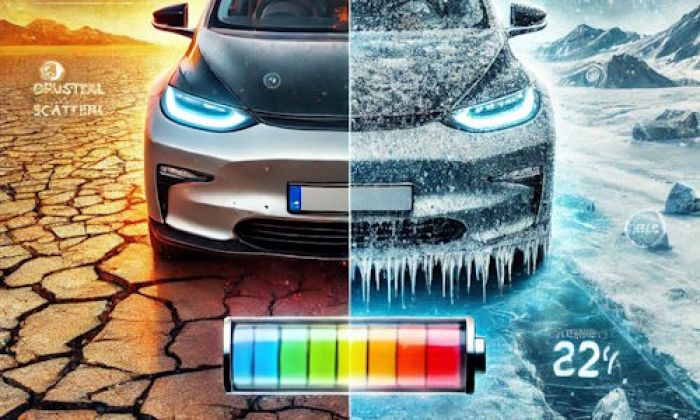Has your Toyota car just thrown up a P0330 code? This standard engine code is your vehicle's way of telling you that there is a problem with your car's knock sensor or circuit. If you are wondering what to do next, this article will give you a decent clue.
P0330 code highlights
- Level of urgency:Low
- Possible culprits:Knocking, knock sensor issues, wiring problems
- Price for repair:$150 - $250
- If neglected:Engine knocking, knock sensor inoperable
- DIY repairs:Possible
- Can you drive?Yes
.jpg)
The Meaning of Your Toyota's P0330 Code
P0330 is a diagnostic trouble code that indicates the detection of a malfunction in your knock sensor 2 circuit. When your Toyota's PCM notices that your knock sensor 2 has an unusually high or low voltage, it will store the P0330 code in your car's memory.
Your Toyota depends on this sensor to detect any knock in your engine. Engine knock is the premature ignition or detonation of the fuel-air mixture in your engine. Pre-detonation affects engine performance because it delivers less power than needed. Your knock sensor should always work optimally because when left uncorrected, this error will cause significant engine damage.
Your knock sensor raises the alarm before the engine knock harms your Toyota's engine components. You are likely to find your knock sensor threaded or bolter in the engine block. When the sensor detects engine knocks in any of your cylinders, it sends a signal to your PCM or ECU. Your vehicle's PCM will then adjust the car's ignition timing to avoid engine knock.
Can You Drive Your Toyota Before Fixing the P0330 Code?
The P0330 code does not compel you to pull over your Toyota and call a tow truck. While the code does not significantly affect your car's drivability, it requires urgent repairs. Do not drive your vehicle under these conditions for a long time. You must fix the issue within a few days to avoid damaging your emission or engine system.
Common Symptoms of the P0330 Code
If your Toyota car displays the P0330 code, your check engine light is likely turned on. Though you won't notice any driving issues, your engine may run hotter than usual. Some drivers have also reported that a loss of engine power and responsiveness accompanied the P0330 code. At times, drivers heard a pinging noise when accelerating.
Common Causes of the P0330 Code
The first step in fixing your P03330 code is figuring out the cause. Remember that a defective sensor does not cause an engine knock. It only sends incorrect signals that affect engine performance and the emission system. Once you have the root of the problem, finding a practical and durable solution will be a walk in the park. These are the most common causes of the P0330 code in your Toyota vehicle.
1) Your Toyota's Knock Sensor is Defective
A defective knock sensor will affect the optimal performance of your engine and cause it to underperform. An underperforming engine struggles to perform basic tasks and eventually malfunctions. You are advised to replace a defective sensor with a high-quality OEM replacement.
2) Your Toyota's Knock Sensor Circuit is Loose or Damaged
A damaged or loose knock sensor circuit is a widespread cause of the P0330 error code that is very easy to fix. Replacing wires and firmly connecting loose ones is all it takes to clear the code.
3) Your Power Control Module Is Malfunctioning
A malfunctioning power control module is a common cause of the P0330 code that must be diagnosed and repaired by professionals.
4) Your Engine Has Mechanical Problems
A defective engine that is running lean may trigger the P0330 error code.
5) Your Engine Coolant System is Defective
If your coolant system is not working effectively, your P0330 code may get triggered.
How to Fix the P0330 Error Code
Now that you know the various likely causes of the P0330 error code you are a step closer to getting rid of the problem. Diagnosing the cause of the code can be done at home, or left to the professionals. If you had rather spend money to spare time and effort, book an appointment with your dealership or reliable auto repair shop.
Relying on professionals is the easiest way to solve your P0330 problem. Most licensed mechanics perform accurate diagnoses and effective repairs that are backed by warranty.
What is the Cost of Fixing a P0330 Error Code
The only way to determine the cost of fixing your P0330 error code is to diagnose the problem. Whatever the cause of your issue, visiting a reputable repair shop will cost you between $50 and $150 diagnosis fee. The fee covers the labor spent on finding the problem and a quotation for the repairs necessary. The shops usually deduct the diagnosis fee from the total cost of repairs.
The actual cost of fixing a bad knock sensor varies greatly depending on how accessible the knock sensor is, your location, and the mechanic's skill. The total cost of labor and replacement parts ranges between $150 and $500.
How to Diagnose the P0330 Error Code in Your Toyota
If you are not an advanced or intermediate DIYer, you are advised to avoid diagnosing the P0330 error code at home. The process requires a labor-intensive, time-consuming process that requires sophisticated equipment. Any intermediate and advanced DIYers who would rather not spend money on labor should try the procedure below.
- Scan your vehicle with the advanced car diagnostic tool, e.g., FIXD scanners, to ensure there aren't any other diagnostic codes. Check if there are any other codes present. Note down any codes you come across because they may come in handy during the diagnosis process.
- Clear the codes on your vehicle and take it out for a spin. Challenge your Toyota vehicle with a lot of hard acceleration and steep hills. Keep an eye (and ear) out for any odd behavior that may indicate the problem is not solved. If you hear the engine knock noises or feel that your vehicle is losing power, the problem will need more probing.
- Scan the vehicle to check for error codes when you get home. Note down any changes in the error codes from the first scan.
- Next, you will inspect the knock sensor. Refer to your owner's manual to figure out the correct voltage range for your knock sensor. Measure the voltage across your knock sensor and check whether it is within the recommended range. If you find no voltage, skip to number 6.
- Your temperature sensor shall also require some inspection. If your temperature sensor's voltage is not within the levels recommended by your owner's manual, it has likely been transmitting false readings to your PCM. Such readings could create engine knock by making the engine run lean. If your temperature sensor's wiring looks loose or damaged, fix it and recheck the voltage reading.
- Look closely at the wiring around your knock sensor for signs of loose, frayed, or damaged wires. Firmly connect any loose wires and replace any that seem damaged.
- If the problem persists, your knock sensor is likely damaged and requires replacement. When replacing a knock sensor, it is also good practice to replace the knock harness.
When diagnosing your P0330 problem, do not make the rookie mistake of overlooking a malfunctioning engine coolant system. If your coolant system is defective and causing your engine to knock and overheat, fixing the knock sensor may not solve your P0330 problem or turn off your check engine light.
About the authors
The CarAraC research team is composed of seasoned auto mechanics and automotive industry professionals, including individuals with advanced degrees and certifications in their field. Our team members boast prestigious credentials, reflecting their extensive knowledge and skills. These qualifications include: IMI: Institute of the Motor Industry, ASE-Certified Master Automobile Technicians; Coventry University, Graduate of MA in Automotive Journalism; Politecnico di Torino, Italy, MS Automotive Engineering; Ss. Cyril and Methodius University in Skopje, Mechanical University in Skopje; TOC Automotive College; DHA Suffa University, Department of Mechanical Engineering






Add comment